Cosmoprincess Mapping
Space Travel Overview
- Travel is via star lanes
- Generally insterstellar lanes go from the largest non-radiant mass, so long as its not too close to the local star (ie hot jupiters don't count) - large solar flux disrupts star lanes. This body is known as the Gateway and is generally both the first line of defense and the most inconvenient to defend.
- System lanes will then radiate outwards to most other massive objects. Some deep-space or unusually placed star way "nodes" are known however.
- Most high-mass objects (ie, planets) generate an 'influence' inside which kernel-drive propulsion operates normally. An area of reduced operation (typically 1/2 to 1/3rd motive performance) extends for roughly ten times this distance. Outside of this, motive performance drops to no better than 10% baseline. A gas giant such as Jupiter could have a zone of influence with a radius of 10 light seconds or more, inside which the actual arrival/departure nodes of the star lanes are much smaller.
Quick-o rules
- Everyone has a hand of tiles and cards. They may place one each during their turn; they may pick from their hand or randomly roll what they will have to place.
- Once every player has taken a turn placing, the map round is over and it restarts from the top. (TI rules of reversing direction for SD context)
- In the first round players may not place cards, only tiles. This establishes the beginning of the map.
- Tiles must be placed adjacent to at least one other tile.
- Places without tiles become voids on the final map - no star lanes cross them.
- A player may pass on placing a card, but must place a tile. They may opt to place a void tile instead of rolling or taking from their hand.
- Cards may be placed on any existing tile, not just the tile recently placed.
- To get a properly chaotic, organic map it is encouraged that players do not discuss their hands or their (planned) placements with each other.
Tiles
Tiles fall into several general types in generally decreasing level of occurance. Tiles represent the first-order astrography of where the interstellar star lines arrive in a star system (the Gateway)

Gas Giant: Most gateways are gas giants outside the green zone of a star system (eg, Jupiter or Saturn).

Low-Mass Gateway: Some systems lack gas giants (or they have migrated in too far to function as gateways) and the gateway is instead some manner of relatively low-mass object. This being relative to a Jovian-sized gas giant however, this means they are probably some sort of oversized super-Earth, a frozen rockball a dozen times the mass of Earth. The influence zone here is small and thus they make good defensive lines. A habitable card represents a conventional habitable world in the system.

Brown Dwarf: Stars small enough to not disrupt star lanes with their radiance. Probably don't have habitable worlds, though it's not impossible. Unlikely to have significant other planets, though comets are a certainty. To represent this rarity, brown dwarves discard 1/2 (rounded up and most valuable first) of any habitable cards put on them. Brown dwarves also cover rogue planets (the difference is small) though obviously a rogue planet cannot host a naturally habitable world.

Starzones: These may be deep space or near a star. They are such things as unusually dense (hollywood-style) asteroid or cometary drifts or nebulae. In exceptionally unusual cases Starzones may have habitable worlds (in which case they presumably have a local sun) and the gateway is the habitable world and its surrounding mass of space junk. As habitable worlds are very rare in Starzones, they discard 2/3 (rounded up and most valuable first) of any habitable cards put on them.

Deep Space: A few star lanes 'dip' back into the sidereal universe in the depth of interstellar space. Aside from the rare wandering comet these places are entirely bereft of anything interesting, though their position light-years from any star makes them an excellent place to put highly sensitive radio telescopes for astronomic observation. Habitable cards may not be placed in deep space for reasons that should be obvious.

Void: This represents large sectors of empty space with no star lanes. They tend to form natural borders.

Stellar Exotica: A rare number of star lanes end up near exotic objects such as black holes or neutron stars, or even some of the true weird wonders of the Known Cloud that defy easy classification such as the Firefountain of Ur or the Great Lens.
Cards
- Tiles are (mostly) relatively generic star systems; Cards are what makes them noteworthy. This includes habitable planets as well as various space terrain, man-made features of note and unique quirks or exotica.
- Any number of cards can be placed on one tile (exercise a bit of self-restraint) and any player may cards place on any tile. The exception is Worlds, by default tiles may not have more than one world.
- Any card title (color) is mostly for local interest and you may play one on top of your normal card play. If rolled randomly, you may place it and roll randomly again. You may continue to do so until you fail to roll another (color) card.
Worlds

Capital World: Every major state has one.

Major World: Major worlds are not independent, but are equally as important to their state as the capital world.

Minor/Neutral World: A relatively lightly populated but nonetheless still fully connected world, these can be frontier worlds or those that are independent but lack any meaningful power.

Fallow World: This world is either entirely uninhabited or, just as likely, is inhabited by a pre-industrial (if not pre-literate) populace with a few scattered offworld settlements

Blasted World: A few worlds have been scoured by various catastrophes natural or man-made over the long millenia. This world may once have had life but no longer does.

Semihabitable World: These worlds are not shirt-sleeve livable, but they are not terribly difficult to settle either. The ancient pre-exodus term for them is 'Martian'.

Twin World: This system has the unusual feature of possessing more than one habitable world, or at least two worlds that may be habitable with some work. In most cases one world is much more comfortable than the other, though genuine twin worlds do exist.
You may immediately play a World card and a second World card is then rolled at random (subject to GM decision)
Cosmoterrain
Cosmoterrain often has a general impact on battles conducted in a system with it.

Asteroid Belt: A thick, Hollywood-esque asteroid field.
Lots of places to hide

Comet Drift: Comets are white and fluffy, but still hurt if you ram into them by accident.
Lots of places to hide
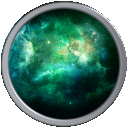
Gas Cloud: Space Fog!.
long range detection/visibility penalty

Cosmic Dust: Microscopic dust and grit pervades the local area. While simple navigational deflectors brush it aside, it can disrupt energy weapons.
Beam penalty.

High EM Fields: The local electromagnetic interference is unusually strong. Not enough to disrupt navigation, but accurate missile fire is problematic.
Missile penalty.

Extensive Moon System: One or more of the gas giants in this star system has a truly prodigious set of moons, sometimes up to moons large enough to effectively be 'planets' in their own right. Some, if the gas giant is conveniently sited, may even be habitable.
Worlds may be placed into the moon system or as normal, but not both unless Twin World is played.

Flare Star: A thick, Hollywood-esque asteroid field.
Lots of places to hide
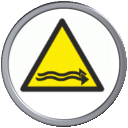
Gravity Tides: A thick, Hollywood-esque asteroid field.
Reduced ship speeds
Complexities
These are artificial things.

Junction: This star system has a particularly large number of star lanes radiating out from it.
- All roads lead to Luxor.

Trade Port: A major trade port is hosted in this system, leading to a particularly large number of merchants travelling to and fro.
- No haggling.

Industrial Hub: While all inhabited systems of note include some amount of industry, industrial hubs are major production sites for (war)ships, vehicles and other large-scale productive efforts.
- The greatest shipyard within a dozen jumps.

Rifter Bazaar: The nomadic Rifters trade far and wide; this star system hosts a more or less permanent enclave of them where all sorts of unusual and often illegal items can be purchased.
- Everything you ever wanted and many things you didn't.

Mercenaries: Mercenaries can be found wherever there is conflict, but this system has a hiring hall (in reality, more of a miniature city with all manner of amenities) where these sellswords can be found for hire.
- Bounty hunters? We don't need that scum.

Pirates: Pirates are known to infest this system, leading to attacks on more honest shipping.
- Your money or your life!

Killer Robots: Unleashed at some point centuries ago, war robots are a hazard found in some star systems. Dangerous and indiscriminate they care not for affiliation.
- Meatbags will be exterminated.
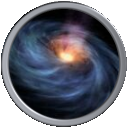
Archaic Wormhole: A thick, Hollywood-esque asteroid field.
- The player before you selects the endpoint of the wormhole. It must be at least five tiles distant.

Riftspace: This system is known as Riftspace, home to the nomadic Rifters and probably has unstable star lanes.
- This card may only be put down when the tile is placed, any henceforce any tile placed on its border that is not also bordering at least one non-Riftspace tile is automatically also Riftspace. Riftspace tiles discard one habitable card (most valuable first).
Color
Color is mostly things of interest without having a significant impact on the grand scale.
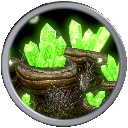
Rich Ores: Astro- and geologic processes have gifted this star system with a particularly bounteous trove of concentrated ores. After all, while any star system has all but unlimited metals, that does not mean they are economic to extract.
- The mines of Mordor produce gold for half the breakeven point of any other.

Trade goods: The habitable planet here is an important source of valuable goods, such as spices or pharmaceuticals.
- The Spice must flow.

Hunting: The local fauna is very much trophy-worthy.
- Clever girl.

Bugs: This better not be another bug hunt.
- It was a bug hunt.

Cosmofauna: Some say they were created by the long-lost Moai Culture, others allege the enigmatic Gene-Alchemists of Shackan. Today, these vaccum-living creatures inhabit this star.
- Space whale party members will be in a uncoming DLC.

Ancient Battlezone: Wrecks of a titanic battle litter this star system. Some date from recent conflicts, others are rusted remains from aeons passed.
- A testament to man's inhumanity towards man.

Moai Relics: Little is known about the ancient Moai Culture, but they have left relics all across the sector. Many of them are immense, stylized human busts.
- It's very big.
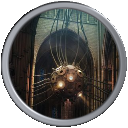
Builders: Runaway Rifter machinery has spread across the stars, constructing strange structures to no clear end - or perhaps the construction itself is the end.
- Redacted as per Cardinal Zulu Ten.